Birds come in all shapes and sizes. Every bird species is different from the last. Some have bright colors, some have beautiful melodies, and others have the purest voice this world will ever know. But no matter what these birds look like or sound like, they all start with the letter M as the first word of their name. In this article, you can read about amazing M-named birds, illustrated with pictures and videos to match. So prepare to have your mind blown.
There are birds all around us in nature, but which ones start with the letter M? Find out the answer here in this fun list.
Merlin (Falco columbarius)

Merlins are a tiny bird species of the falcon bird family, with numerous subspecies spread across North America and Eurasia. Although they breed in the Northern Holarctic, some birds of this species migrate to tropical and northern tropical regions during the winter.
The males have a bluish-grey back and orangish underparts tossed with black or reddish-brown. On the other hand, their female counterparts have brownish-grey upper parts and white-tinted brown lower portions.
Merlins mainly feed on tiny mammals and small insects.
Mountain Bluebird (Sialia currucoides)
/mountain-bluebird-male-9e04a24708ad480ab75c06b5e5e87efb.jpg)
Mountain Bluebirds are tiny birds breeding across western parts of North America. These birds are migratory, wintering in Mexico, and spend their summers in western Canada and Alaska.
Although both sexes of this species are similar in size, they display sexual dimorphism in their plumage. The males feature turquoise-blue upperparts, paler underparts, and a whitish belly, while the females are overall grey with light blue wings and tails.
The diet of Mountain Bluebirds mainly includes insects during the winters and berries in summer.
Mandarin Duck (Aix galericulata)
/mandarin.primary-0122dea9f4144c3eb3ea5a30920cf5bd.jpg)
Mandarin Ducks are a medium-sized waterfowl species endemic to the East Palearctic. Belonging to the Aix genus, these ducks breed in densely wooded regions across lakes, ponds, and marshes.
The males feature a big, whitish crescent above their eyes and a red face. The females have pale underparts, a tiny whitish flank stripe, and a slightly hooked bill.
Both the counterparts have crests, but the purplish crest is more visible in the males. Mandarin Ducks primarily feed on plants and seeds.
Mourning Dove (Zenaida macroura)

Mourning Doves are strong fliers and are found in abundance in North America. This bird species is also the national bird of the British Virgin Islands.
Mourning Doves are medium-sized birds with slender bills, rounded heads, and broad elliptical wings. Males have bluish-grey crowns and purplish patches on their necks.
Their female counterparts are almost alike, except they are slightly smaller and have a slightly more brownish body shade overall.
Although Mourning Doves are omnivores, they mainly feed on seeds. You will find them consuming snails or insects on rare occasions.
Marsh Owl (Asio capensis)
Marsh Owls are nocturnal birds in the typical owl family, which inhabit open grasslands, scrubs, and marshlands. These birds are commonly found across the South African grasslands. Interestingly enough, they have heads that closely resemble a pumpkin.
Marsh Owls have a facial disc with distinguishing a dark brown rim and polished speckles. Their dark brown tails are tipped with white. The males usually have a paler coloration than their female counterparts.
Marsh Owls generally feed on small invertebrates, rodents, beetles, grasshoppers, and other small insects.
Mottled Duck (Anas fulvigula)
Mottled ducks are medium-sized dabbling duck species common across the Mexican Gulf. These waterfowls feature dark bodies and eyes, with lighter heads and necks. Their legs are orange. Both the sexes have a vibrant greenish-blue speculum.
The male Mottled Ducks sport a light-yellow bill, whereas it is deep orange in their female counterparts, sometimes lined with black patches around the edges.
Mottled Ducks prefer catching their prey by dabbling in shallow waters or by land grazing. They mainly eat plants and aquatic insects.
Melodious Warbler (Hippolais polyglotta)
The Melodious Warblers are medium-sized migratory birds breeding in southwest Europe and northwest Africa. These birds spend their winters in sub-Saharan Africa.
Melodious Warblers primarily inhabit open woodlands and bushes. The adults have a plain brownish back and wings with yellow underparts. They also have a steady, pointed bill and brown legs.
The adult Melodious Warblers are sexually monomorphic, displaying minimal differences in size and plumage. These birds emit a pleasant babbling sound. They are primarily insectivorous but might eat berries as well.
Mountain Pygmy-Owl (Glaucidium gnoma)
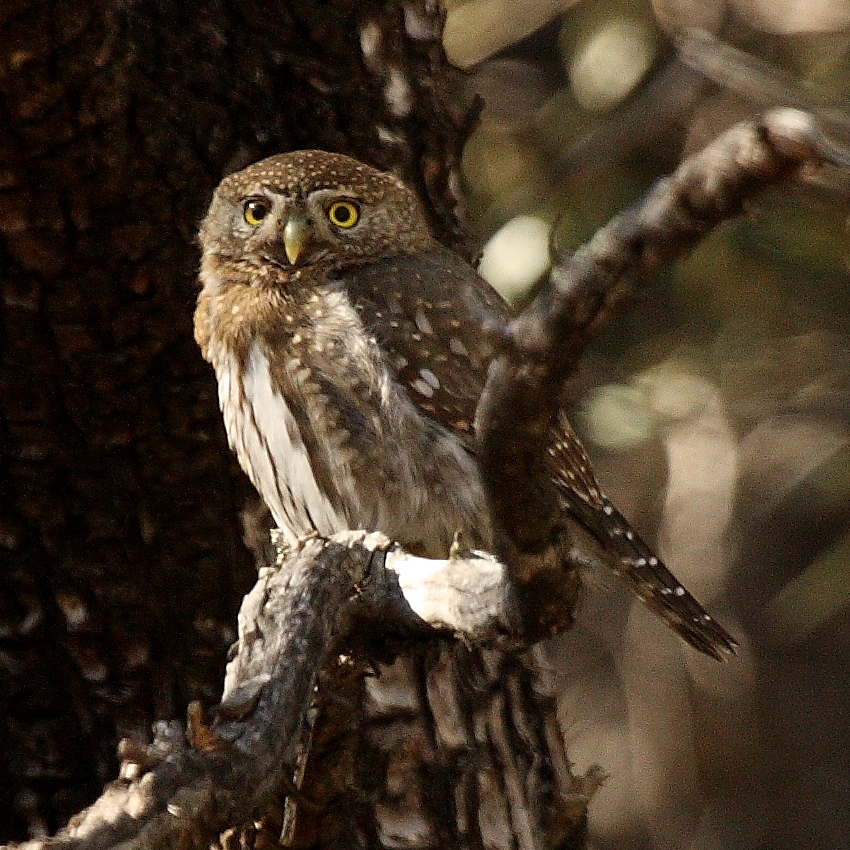
Mountain Pygmy Owls are a tiny owl species endemic to Central America. These raptors inhabit humid pine evergreen forests in the mountainous regions. They feature a brownish facial disk and whitish eyebrows.
Mountain Pygmy Owls have greyish-brown or general brown upperparts with polished white spots at their back, while their underparts are generally a splash of off-white.
Although these birds are nocturnal, they can be spotted actively hunting during dusk and dawn. Other than feeding on small insects, they also eat reptiles, small mammals, and other birds.
Mute Swan (Cygnus olor)
Being one of the heaviest flying bird species, the Mute Swans are a waterfowl species that are endemic to the Eurosiberian region. These swans are also spotted as rare visitors to the far north of Africa.
Mute Swans inhabit temperate regions of Europe. The male counterparts are larger than the females, with a larger knob on their bills. They are white in maturity, with their feathers often appearing to be orangish brown.
Mute Swans have a strictly vegetarian diet and mainly feed on agricultural crop plants, including wheat and oilseeds.
Mallard (Anas platyrhynchos)

Mallards are medium-sized dabbling duck species with an abundant population across the Northern and Southern hemispheres. These ducks are very common in the southern portions of North America.
Mallards inhabit a wide range of climates, from Arctic Tundra to Subtropical regions. The males have a yellowish-orange bill tossed in light black, while their female counterparts usually have a dark black to a mottled orange one.
These waterfowls have unique purplish-blue speculum feathers that are easy to spot when they are in flight. They mostly feed on insects, seeds, and plant matter.
Mottled Owl (Ciccaba virgata)
Mottled Owls are medium-sized owl species found in Central and South America across Mexico, Brazil, and Argentina. These owls primarily inhabit rainforests, pine forests, and woodlands.
Mottled Owls display sexual dimorphism in size, with the female being distinctly larger than their male counterparts. Devoid of ear tufts, they feature a polished brown back, white underparts with vertical lines on the chest and throat.
These nocturnal birds feed on small mammals, birds, reptiles, and other insects.
Martial Eagle (Polemaetus bellicosus)

Being the monotypic member of the Polemaetus genus, the Martial Eagles are an eagle species that are endemic to sub-Saharan Africa. These birds of prey are capable of soaring in the sky for long hours without taking a break.
The population of Martial Eagles has an Endangered status, mainly due to their low reproductive rates. They inhabit open wood, woodland edges, and thorn bushes
Martial Eagles are strongly sexually dimorphic. They are opportunistic predators and hunt their prey with unique techniques. They mainly feed on mammals, birds, and reptiles.
Masked Booby (Sula dactylatra)
The Masked Boobies are a large seabird species of the Sulidae bird family. These birds are spread across the Arabian Peninsula coastline and East Africa to Sumatra and Western Australia. “Masked Gannet” and “Blue-faced Booby” are some other names that these birds are known by.
Masked Boobies have fluid-shaped bodies, long, pointed bills and tails, and slender wings. The skin around their face and throat is bluish-black while in plumage, giving them a white, mask-like appearance.
While these birds have similar plumage, they are sexually dimorphic in size, with the females being larger and heavier than their male counts. Masked Boobies primarily feed on fish.
Mexican Jay (Aphelocoma wollweberi)
Mexican Jays are a medium-sized corvid species that are native to Sierra Madre Oriental, Sierra Madre Occidental, Mexican Central Plateau, and the southwestern United States. These birds primarily inhabit the montane pine-oak forests within their range.
Mexican Jays have a blue head, bluish-grey mantle, blue wings, and tail. However, their breast and underparts are pale grey. The adults are sexually monomorphic, with both the males and females appearing identical.
Mexican Jays are omnivorous birds, feeding on a different range of plants, invertebrates, small amphibians, and reptiles.
Magpie Goose (Anseranas semipalmata)
Being the only living species of the Anseranatidae bird family, the Magpie Geese are medium-sized duck species. These waterfowls are commonly found in northern Australia and southern New Guinea.
Magpie Geese have the distinguishing feature of black and white plumage with yellowish legs. Although both the sexes of this species have a similar appearance, the males are larger than the females. They have a loud, honking call, which is often used as a field identification mark by the birders.
Magpie Geese mainly feed on the vegetable matter both on land and in water.
Maned Owl (Jubula lettii)
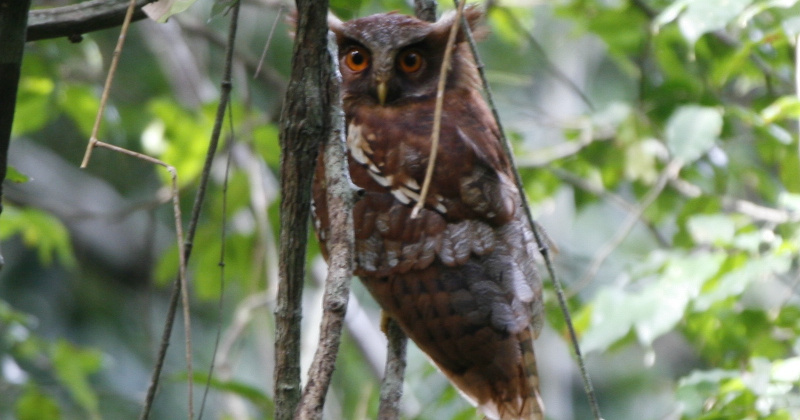
Being the monotypic member of the Jubula genus, the Maned Owls are a large-headed owl species endemic to Africa. These owls inhabit canopy evergreen forests and tropical rainforests of West Africa.
Maned Owls have unique, floppy white-tipped feathers on their crown and ear tufts that give them an impression of a mane. They also have a black facial disc with a white throat. Their upper parts are narrowly covered in a deep-chestnut hue.
Maned Owls are omnivores and mainly feed on insects and green plants.
Marsh Sandpiper (Tringa stagnatilis)

Marsh Sandpipers are a tiny migratory wader species, breeding in taiga wetlands and steppes from east Europe to far east Russia. A part of their population spends their winters in Africa and India, while the rest prefers to fly to southeastern Asia and Australia.
These birds appear to be greenish-brown in their breeding plumage and grow paler during the winter. During their flight, the white wedge located on their back is clearly visible.
Marsh Sandpipers are primarily insectivorous and feed on insects almost exclusively.
Milky Stork (Mycteria cinerea)

Belonging to the Mycteria genus, the Milky Storks are wading birds that are endemic to Southeast Asia, inhabiting mangroves, peat swamps, estuaries, and freshwater.
These birds are declared endangered by the IUCN, with fish farming and timber exploitation being the major threats to their population.
Milky Storks have a medium-sized body, with grey or dark maroon facial skin and indecent black patches.
Just as their name suggests, the plumage of Milky Storks is milk-white, with blackish flight feathers that have a greenish shine. These birds have yellowish-orange bills, orange legs, and distinguishing head feathers.
Milky Storks primarily feed on catfish and mudskippers.
Macaroni Penguin (Eudyptes chrysolophus)

Macaroni Penguins are one of the six species of crested penguins found across the Subantarctic and Antarctic Peninsula. They have a unique yellow crest.
The upper parts of Macaroni Penguins are deep black and well-differentiated from the milk-white underparts, with black plumage that has a bluish undertone. Their legs are dipped in pink.
While the adult Macaroni Penguins do not display sexual dimorphism in their plumage, they do so in size, with the males being larger than the females.
These popular sea birds mainly thrive on marine creatures, feeding on different crustaceans, krill, and cephalopods (tiny fish).
Mangrove Hummingbird (Amazilia boucardi)
The Mangrove Hummingbirds belong to the family of Trochilidae and are endemic to Costa Rica. These hummingbirds are mainly found in tropical mangrove habitats. Unfortunately, their population is endangered, mainly due to charcoal production and shrimp pond construction.
Mangrove Hummingbirds are named after their primary diet, i.e., the nectar from tea mangrove flowers.
Mediterranean Gull (Ichthyaetus melanocephalus)
Mediterranean Gulls are found mostly in Southern Europe and Ireland. Thriving in mixed family colonies, these gulls breed inland and coastal sites around the Black Sea and central Turkey.
These gulls are most active in winters. They have jet black plumes with whitish-grey wings. Their distinguished beak is blood red and heavy. The diet of the Mediterranean Gulls mostly consists of beetle larvae and worms.
Marbled Duck (Marmaronetta angustirostris)
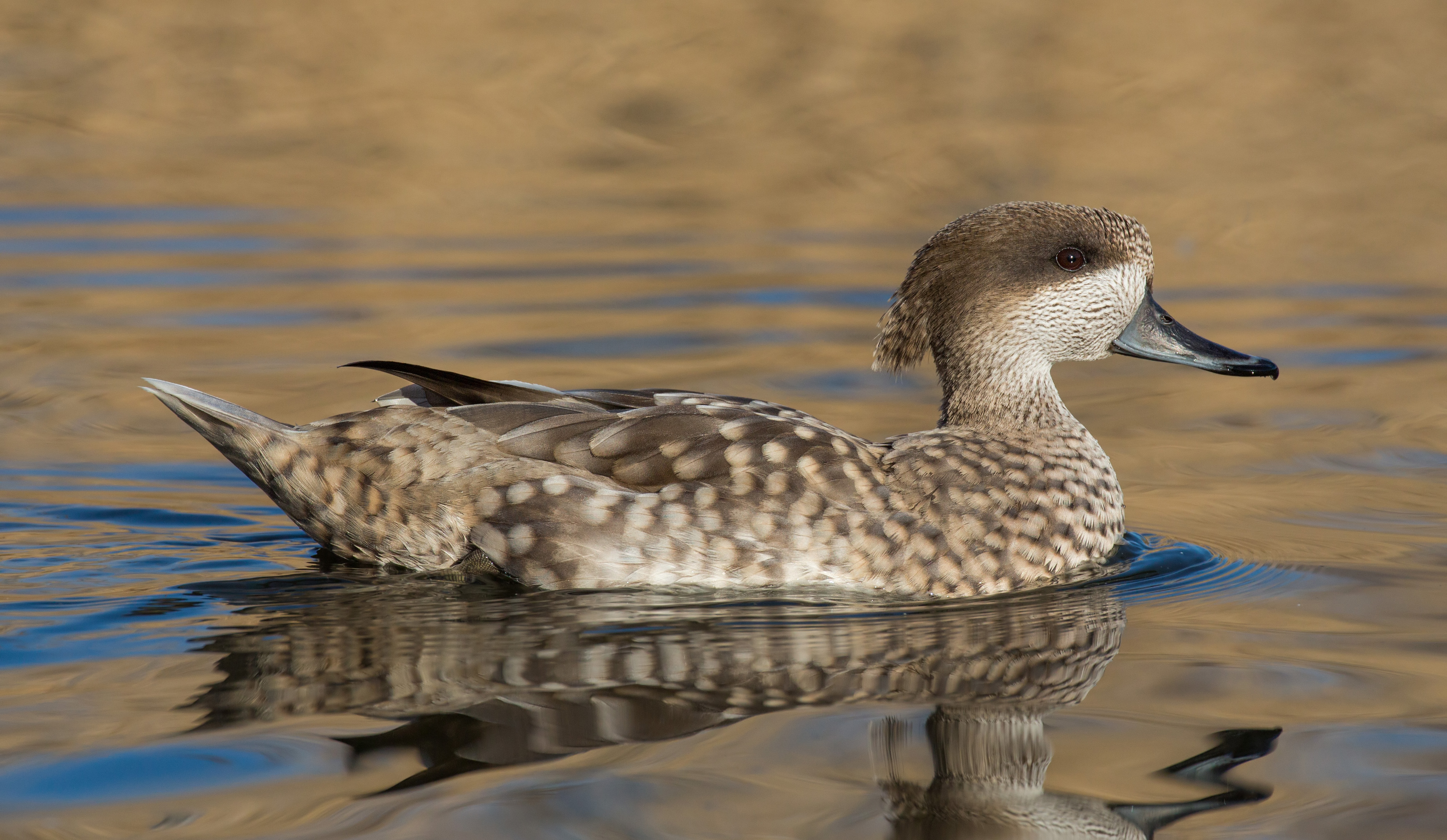
Marbled Ducks are a duck species that are endemic to southern Europe. Although initially they were largely found in the Mediterranean region, Marbled Ducks now frequent the marshes of southern Iraq.
Their habitat includes brackish wetlands. These birds are known for their elegant sandy, off-white color. Marbled Ducks thrive on a variety of diets like seeds, insects, aquatic grass, etc.
Mosque Swallow (Cecropis senegalensis)

Mosque Swallows are non-migratory birds that breed in sub-Saharan Africa. They are the heaviest birds in the swallow family. Although the population of Mosque Swallows is increasing continuously, they are not endemic to any region.
The glossy blue crown and pale rufous throat of the Mosque Swallows are two of their most distinctive features. Interestingly enough, their breeding season lasts all year long.
Mosque Swallows mainly feed on ants and termite colonies and are also attracted to bush fires.
Mottled Piculet (Picumnus nebulosus)
Mottled Piculets are tiny birds found in the eastern regions of Brazil and Argentina. These birds primarily inhabit tropical and subtropical lowlands. Their unique characteristics include red patches on their crown and rust-colored wings.
Mottled Piculets have a distinct chirp, humming, and whistling sound. Their eating habits are not well known, but small invertebrates have been found in their stems. Their population is decreasing continuously due to habitat loss and has acquired a near-threatened status.
Mistletoebird (Dicaeum hirundinaceum)
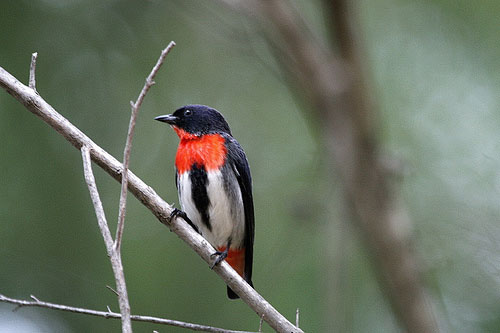
The Mistletoebirds belong to the Dicaeidae family and are native to the Americas. They are parasitic birds that latch themselves in mistletoe trees. They consume the fruits on the plant, and their excretion helps further their germination.
These birds have a swift flight and fly high above the canopy of trees. The males have a blue-black head, white belly with a red tone under the tail. On the other hand, their female counterparts have grey and white feathers and a red shade under the tail.
Malabar Grey Hornbill (Ocyceros griseus)
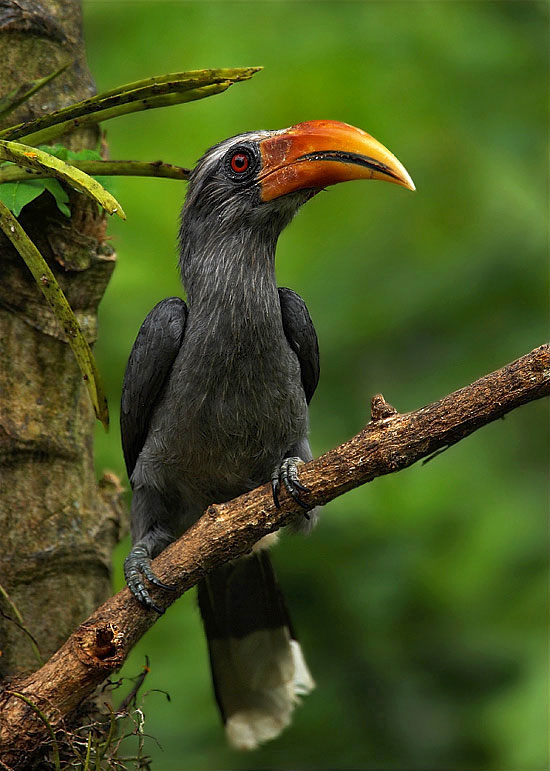
Ranked among the smallest Asian hornbill species, the Malabar Hornbills are endemic to the western ghats in India. Their species have been declining in population density due to unclear reasons.
Malabar Hornbills have brown-grey wings with whitish streaks. The males of this species have a red beak, while their female counterparts have a yellow beak. They have a distinct laughing/ crackling sound.
Malabar Hornbills thrive on forest fruits and occasionally feed on small vertebrates.
Metallic Pigeon (Columba vitiensis)
Belonging to the Columbidae family, the Metallic Pigeons are mostly found in eastern Indonesia, Fiji, the Philippines, and New Guinea. These birds thrive in tropical forests and have many subspecies.
Metallic Pigeons have a brilliant purple plumage, a green crown, and a yellowish bill. Both sexes are identical in appearance and have a high-pitched “coo.”
Metallic Pigeons feed mostly on grains, berries, and fruits. They have steady population growth.
Masked Finch (Poephila personata)

Masked Finches are tiny songbirds that live in northern Australia but are said to have originated from India. This species occurs in a large range with an increasing population. They live in grasslands and the savannahs of Australia.
Masked Finches are small birds and have cinnamon-brown plumage with a black face, yellow bill, and white or black tail. They feed on grass seeds and are quite active and chirpy in the mornings.
Mikado Pheasant (Syrmaticus mikado)

Mikado Pheasants are endemic to Taiwan, where they inhabit mountain regions and dense shrubs. They are solitary birds that are always alert to their surroundings.
These birds fly short distances, most often for foraging purposes. They have a mixed diet of leaves, fruits, and invertebrates.
Due to poaching and hunting, the population of Mikado Pheasants has decreased but is being conserved through various methods.
Mikado Pheasants have a red face, with blue and white markings on their wings. The males are larger than their female counterparts, thus displaying sexual dimorphism.
Mediterranean Flycatcher (Muscicapa tyrrhenica)

Mediterranean Flycatchers are migratory songbirds that breed in Corsica, Sardinia and spend the winter in Africa. These flycatchers generally prefer living in woodlands and open areas.
Mediterranean Flycatchers have a greyish-brown body, with long wings and tails. Pointed black bill and whitish underparts are some of their significant physical characteristics. They’re slim birds with unique erect posture and hunt for insects from perches.
Mediterranean Flycatchers have a soft, high-pitched sound.
Conclusion: Birds That Start With M
We hope you’ve enjoyed reading our article on birds that begin with the letter M. I hope you now know more than you ever wanted to about birds that start with the letter M. If you do, then I’ve done my job well. If not, then at least I’ve given you some fun facts that you can use to impress people at the next social occasion.
Let’s wrap up this blog post now! It’s been a good one, right? Thanks for reading. Don’t forget to check here for more fun bird-related blog posts!
Birds By Alphabet (A-Z List)
Birds that Start with A
Birds that Start with B
Birds that Start with C
Birds that Start with D
Birds that Start with E
Birds that Start with F
Birds that Start with G
Birds that Start with H
Birds that Start with I
Birds that Start with J
Birds that Start with K
Birds that Start with L
Birds that Start with M
Birds that Start with N
Birds that Start with O
Birds that Start with P
Birds that Start with Q
Birds that Start with R
Birds that Start with S
Birds that Start with T
Birds that Start with U
Birds that Start with V
Birds that Start with W
Birds that Start with X
Birds that Start with Y
Birds that Start with Z











